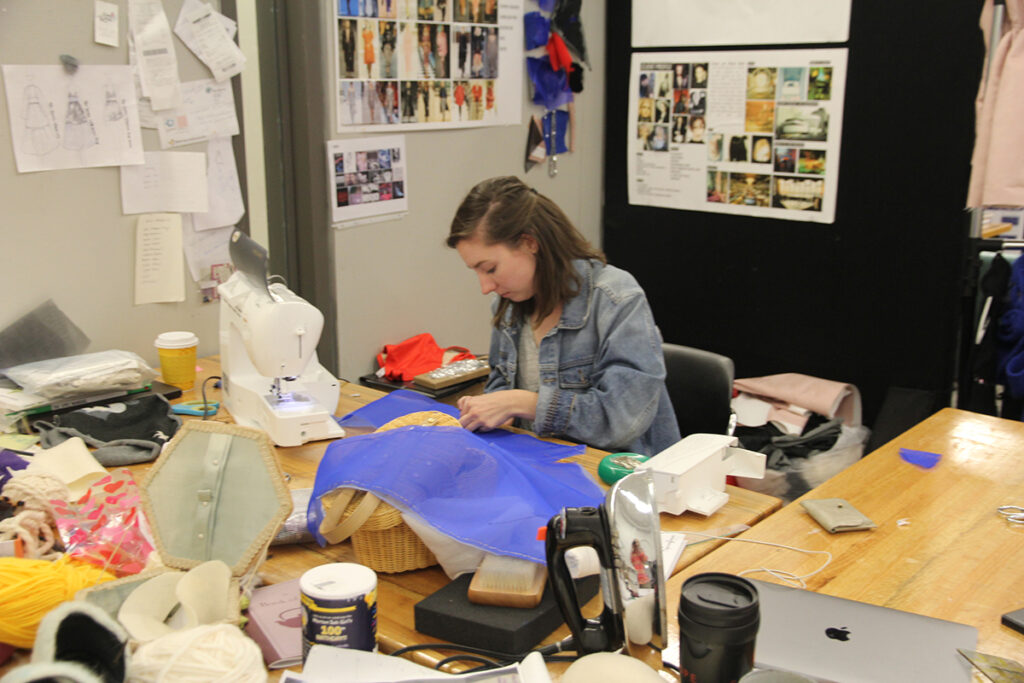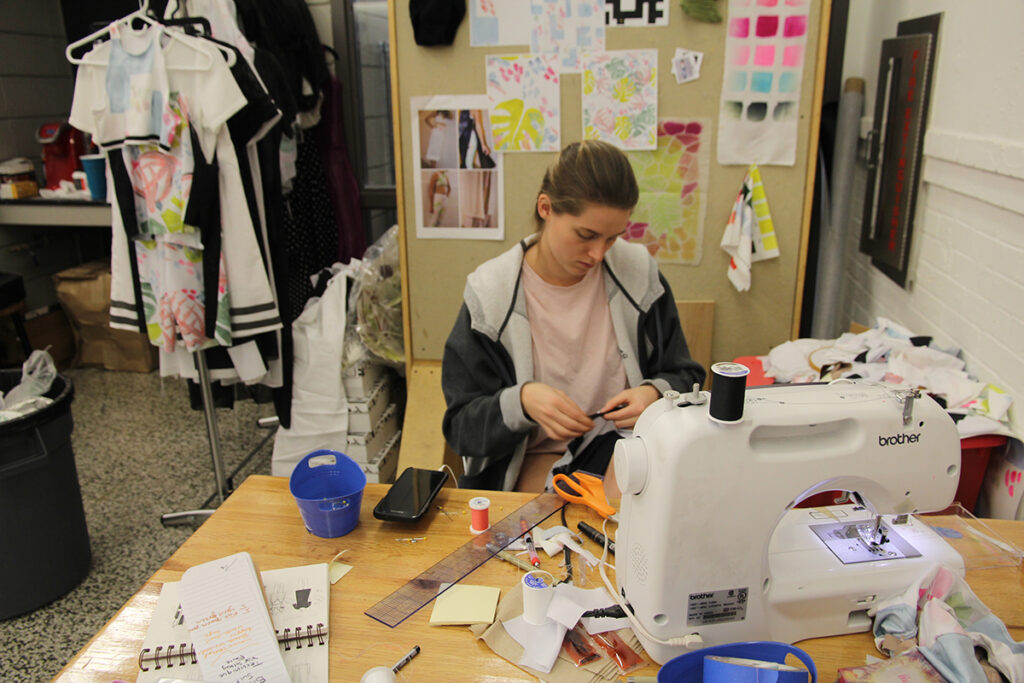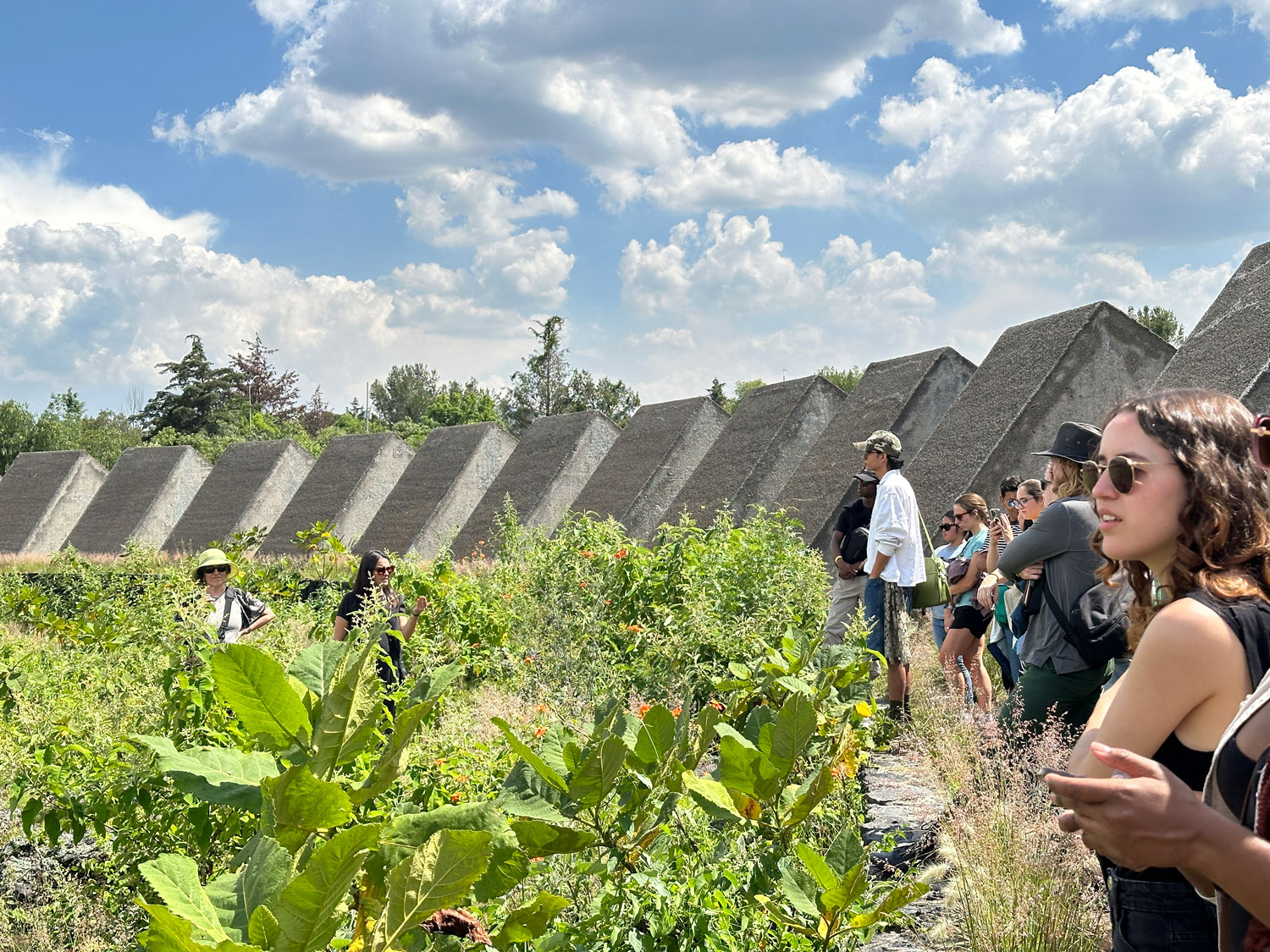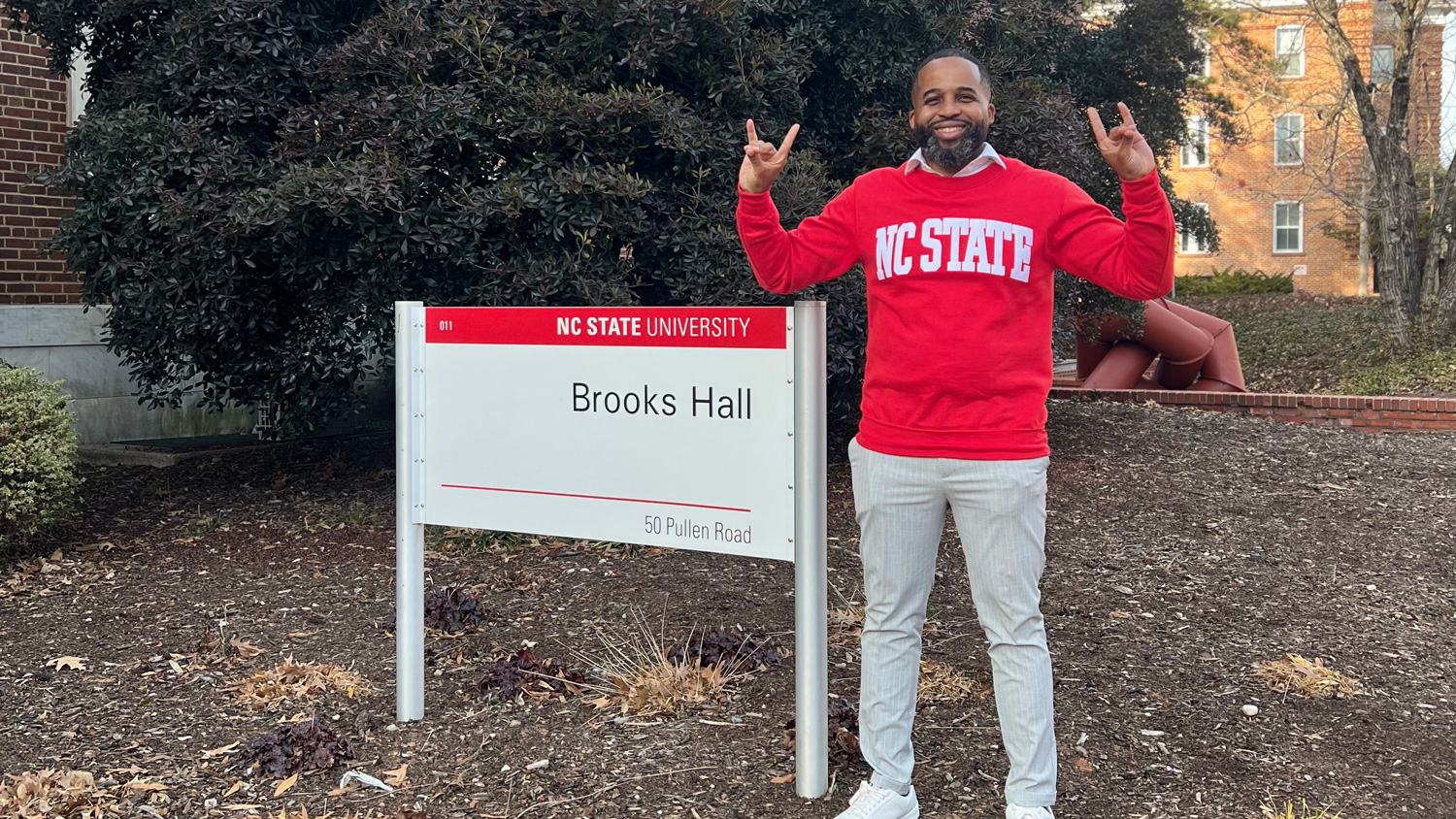An Experience Worth Supporting

Art 2 Wear (A2W) is a highly visible, iconic student-run fashion show that annually delivers a captivating and sold-out runway event—and it is unlike any other. Nested within the studios at the College of Design, A2W provides the perfect venue for students to showcase their talents in fashion, textiles, jewelry, event production, and volunteer collaborative committees for promotion, photography, and a wealth of additional program needs. It takes a village to execute an event of this magnitude. A2W will take place on April 28 at the Talley Student Union Ballroom, and tickets go on sale March 14.
In its 16th season, A2W bridges creative exploration and learning with professional experience, and seasons it all with a dash of energy. The year-long planning that leads up to the event requires the assimilation of a large network of students interested in sharing their time and talents to develop, promote, and implement strategies to ensure another successful night. Student designers plunge in with the thrill of creating their own lines of wearable art and the chance to participate in this once-in-a-lifetime opportunity.
Interested students must apply to participate and are reviewed by a jury for consideration. Selected designers meet on Mondays and Wednesdays in studio with Assistant professor of Art + Design and Faculty Advisor for A2W Justin LeBlanc to further develop their wares. The A2W studio in Leazar Hall is filled with an array of materials, fabrics, pin-ups, mannequin dress forms, sewing machines, and student designs in a variety of stages. The space is bright and inviting, and no matter the day or time, there are likely to be students hard at work.

Student designers who make the immense commitment to participate in this event, enjoy a wealth of personal gratification, but they must also overcome hurdles. “[A2W] can be stressful, with the amount of time needed and the costs associated,” states Quinan Dalton, who for the second consecutive year will have a collection in the show. Dalton and fellow classmate Grace Hallman, also a repeat A2W designer, are both seniors in Art + Design and have the additional commitment of being selected for Charleston Fashion Week®. This event, which will take place in mid-March, is a five-night fashion event that showcases emerging designers and models from across the East Coast and is known to open doors in the fashion industry for participants.

Hallman openly admits that this week alone, she has spent more than 50 hours in the studio working on her line. Luckily, she has flexibility, as she is carrying a light credit-hour schedule. Dalton, on the other hand, says, “I spend about fifteen to twenty hours a week in-studio, working solely on A2W and anything related.” She also started the process of designing her line in the summer, prior to the start of the fall semester, and has been working on it ever since. The time commitment is something that a student needs to be conscious of and willing and able to manage, as it can be overwhelming.
In addition to being able to commit a great deal of time, students need to have the financial means to support the endeavor. A2W is supported by the NC State University Foundation and has received additional funding from Spoonflower, a Durham-based on-demand fabric and textile retailer that provides A2W designers a stipend of $250 that they can use towards purchasing Spoonflower fabrics. Last year, Dalton was not able to make use of the stipend due to the custom fabric choices in her line; however, she was able to offer it to another designer. “It certainly can be a benefit for a designer [to have the stipend], but it also requires you to limit your creativity in what fabrics you can use,” she says.
Dalton took advantage of an undergraduate research grant last year. “I received a research grant for $1000 that I applied for with the purpose of researching couture sewing techniques, and I utilized this money for A2W.” Dalton used much of the money on materials and a trip to New York City to explore fabrics. She acknowledges that the grant was a huge benefit, but she spent an additional $500 of her own money. This year, her line includes more pieces, and she cannot apply for the research grant again, so her current expenses are well over $2,000. She has been fortunate enough to receive support from her parents and to have financial-aid funds available that could be used towards college-related expenses.
“I absolutely think this [financial] burden limits the number of students who participate in A2W,” she explains. “One skein of yarn may be cheap, but it adds up quickly when you need dozens. It’s not just the materials used, but the shoes, hair, and make-up for the models, and it adds up.” Dalton is planning a special photo shoot of her completed fashion line that will play an important role when she seeks out future employment. She is renting out the Rialto Theater, and this, too, has a cost.
The research grant Dalton was awarded last year is something Hallman is thankful for this year. Even with this grant, she will still spend $700 or $800 out-of-pocket. “My parents are helping me, and I also work on the weekends to pay for part of these expenses,” says Hallman. Without the research grant, Hallman knows that she would not have been able to design her collection in the way she intended.
Hallman agrees that the burden of expense is a concern for designers. “Having the limitation of funds can be a deterrent on what you can do. It means a lot as a designer to be able to envision your collection with the materials you want to use, instead of the materials that you have to use. Without the means to pay for things, you have to pull back from what you really want.” For her, A2W is valuable for the experience and the opportunity to design a personal collection.
Both designers would love to see more organizations consider sponsoring A2W and believe that this would likely encourage more students to participate. “I’m certain that there are students who did not participate in A2W due to the associated costs,” Hallman states. They hope that individuals and organizations can see the value in supporting such a worthy cause as A2W. “I think it could be good advertising for a company to consider donating to or supporting the event. It is helping someone to be able to do something important without sacrificing other parts of their life,” concludes Hallman.
- Categories:


